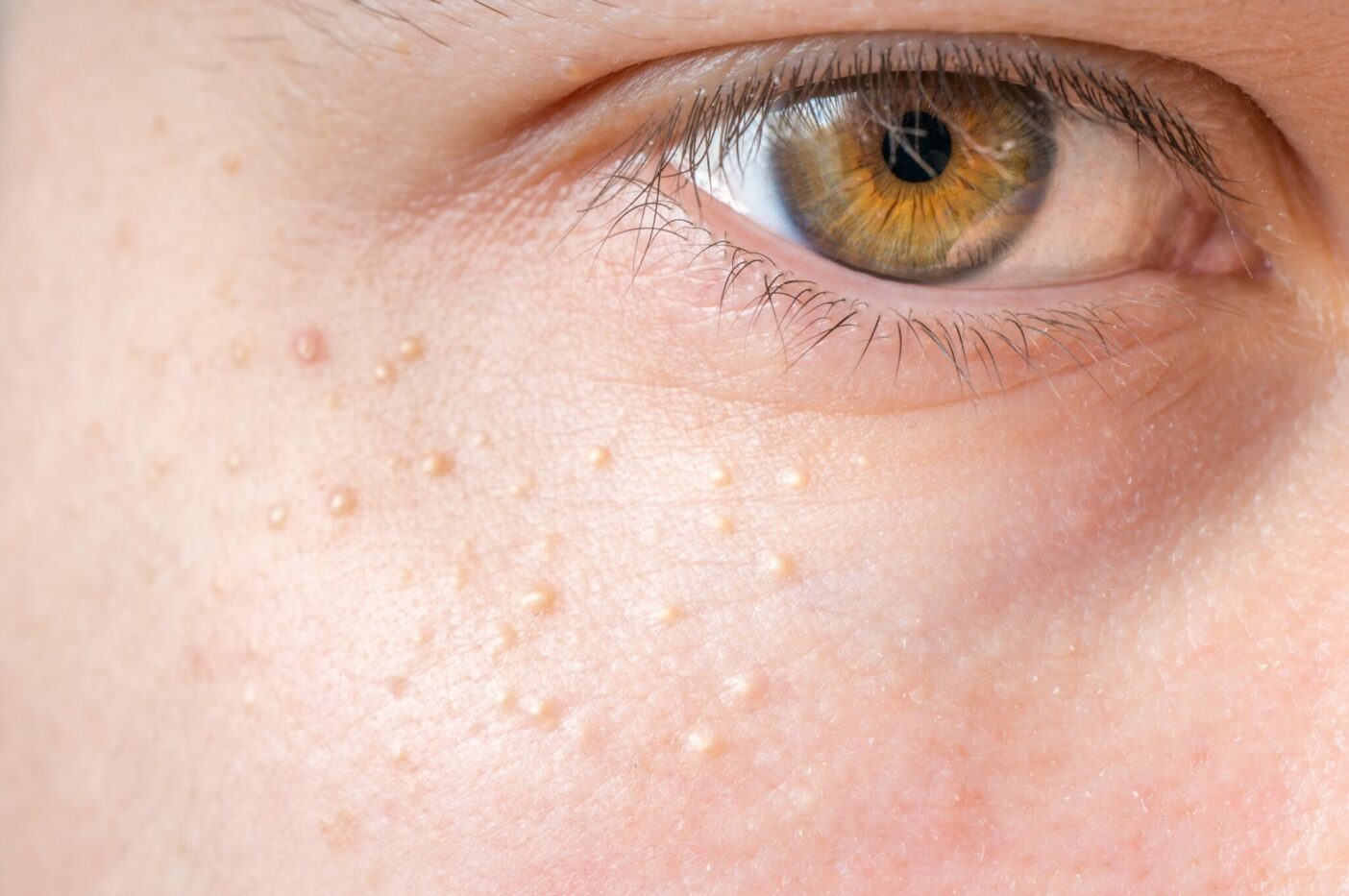Non-comedogenic

Many skin care products are labeled “non-comedogenic”. Although most consumers know that this refers to a cosmetic product, very few are able to say exactly what it means. In this article, we shed some light on the subject and explain why cosmetics without non-comedogenic raw materials are a good choice for many people.
What does non-comedogenic mean?
Comedones are clogged pores. They contain sebum, keratin and often bacteria. Comedones can be closed and then appear as white pimples and pustules. However, they are also often open. They then appear as the familiar blackheads. Both forms are unpleasant and irritating. And that’s not all: they often leave unsightly scars once the inflammation has subsided. Many people struggle with blackheads intermittently or regularly.
The so-called T-zone on the face is particularly affected, but the back, décolleté, shoulders, arms and neck are also typical areas of the body. The problem often occurs in teenage years or during puberty. This is when androgenic hormones cause increased sebum production. However, the cause does not necessarily have to be a hormonal imbalance or a genetic predisposition: Many cosmetics are also suspected of promoting the development of comedones. Especially in people who already have oily and sensitive skin. These products are then considered comedogenic. Anyone who takes a closer look at the subject will be surprised to discover that many proven ingredients have a comedogenic effect.
For example, the active ingredients cocoa butter, coconut oil, Vaseline, palm oil, evening primrose oil and olive oil are considered to be particularly comedogenic. The same applies to kerosenes and silicones. However, this does not mean that all of these substances are generally not recommended. People with very dry skin and low sebum production, for example, can certainly benefit from a skincare product containing cocoa butter.
It does not have a comedogenic effect on them. On the other hand, those who are prone to acne and/or have rather oily skin should make sure that the ingredients are non-comedogenic when buying skincare and cosmetic products. In other words, a product whose active ingredients are comedogenic does not automatically trigger pimples, pustules and blackheads for every user. Rather, it always depends on the respective skin type.
Non-comedogenic: What makes the products different
A non-comedogenic skincare product is usually characterized by a lighter texture, both visually and haptically. It contains fewer fatty oils; instead, responsible manufacturers rely on active ingredients such as argan oil, hemp oil, grape seed oil, jojoba oil and shea butter. Pomegranate seed oil, prickly pear seed oil and rosehip seed oil are also considered non-comedogenic. But be careful: Whether a cosmetic product is non-comedogenic or not cannot be deduced from the individual active ingredients it contains. Rather, it depends on the overall formulation. So if you want to be on the safe side, you should take a look at the INCI list before buying. If the non-comedogenic ingredients mentioned above and fats of animal origin such as lanolin are listed there, people with oily and/or blemished skin should not buy the product. This will prevent these substances from clogging the pores and preventing sebum from draining away.
Can I rely on the “non-comedogenic” claim?
As mentioned at the beginning, we find the words “non-comedogenic” on the packaging of many products. But can consumers really rely on this? Anyone who wants to launch a cosmetic product on the market must be able to substantiate their advertising claim. This is to prevent false promises being made to customers. There are now inexpensive and effective methods for measuring or detecting skin changes that are barely visible to the naked eye, from which comedones can develop. This works, for example, with the innovative Visiopor camera.
It has already been used in many interesting studies. Among other things, it is used to demonstrate the effectiveness of cosmetic and care products. It can also determine a possible anti-comedogenic and pore-refining effect. The way it works is as simple as it is ingenious: the ultra-modern and very powerful device is able to make the orange-red fluorescence of porphyrins visible under special UV-A light and with the help of polarization filters. The more intense the fluorescence, the more severe the skin blemishes. Conversely, a decrease in fluorescence indicates a significant cosmetic improvement.
Porphyrins are produced by Cutibacterium acnes, a bacterium that occurs in the natural skin flora and feeds on decomposed organic material such as sebum.
Among other things, porphyrins can lead to the development of acne. The camera is non-invasive. It is an excellent means of proving that a product is not comedogenic. We at Cosmacon are also enthusiastic about this measurement method.
Looking for high-quality formulations?
Contact Cosmacon and offer your target group sophisticated, modern and well-tolerated cosmetic products with non-comedogenic active ingredients! These products can be a real boon, especially for people with oily, blemished or oily skin. Thanks to state-of-the-art measuring methods, the effectiveness of the formulations can be proven beyond doubt. Of course, non-comedogenic products are no guarantee of flawlessly clear skin. Nevertheless, their use is recommended in many cases.
Literatur:
Waranuch N, Wisutthathum S, Tuanthai S, Kittikun P, Grandmottet F, Tay F, Viyoch J.Contemp Clin Trials Commun. 2021 Aug 19;23:100834
An innovative approach to the topical treatment of acne.
Sparavigna A, Tenconi B, De Ponti I, La Penna L.Clin Cosmet Investig Dermatol. 2015 Apr 9;8:179-85
Del Rosso JQ, Kircik L.J Dermatolog Treat. 2024 Dec;35(1):2296855
Zerbinati N, Di Francesco S, Capillo MC, Maccario C, Stabile G, Galadari H, Rauso R, Sommatis S, Mocchi R.Pharmaceuticals (Basel). 2023 Apr 27;16(5):655